How to Develop Business Software: Essential Guide

Business software development is an extensive topic, diving into which feels like drinking from a firehouse due to the constant influx of cutting-edge technologies, practices to be absorbed, and ever-evolving needs. In this synopsis, we will define the nitty-gritty behind custom creation that will benefit your organization.
To prevent software development for business from being all Greek to you, we will consider its definition, core steps to be taken when you decide to build such a solution, tailored features, average cost, trends, and even choosing a company to cooperate with.
If you would like to create business software that will help you make a name for yourself, this material is your VIP pass, with our leveraged decade of experience in delivering reliable software development services for firms from startups to enterprises. Let’s dive right into the standpoints.
What is business software development?
To get off on the right foot, it’s best for us to discuss what the definition of this process is first. The creation of software for a specific purpose entails collecting all of the goals and requirements of the client to then proceed with production to deliver a final tool that 100% meets the expectations and performs as intended for successful business operation.
Qualified technical specialists are tasked with designing and developing business software according to standards with continuous testing to eliminate any errors for proper functioning, so you can choose to hire software developers or make this on your own.
Maintenance and support of the solution is also considered as an integral part of competent services to complete the cycle.
The system in question can be comprised of a variety of things, including ERP creation, CMS development, websites and applications, platforms for internal or external use and so on. This kind of craftsmanship is not necessarily tied to any particular industry and can be received by owners from different sectors, regardless if they are part of SMEs or enterprise-level corporations.
The goal of business software programming is to hit the nail on the head in terms of requirements, providing a product that enhances the operations of the company and brings tangible value that can be measured in established metrics.
In most cases, the intricacy of module is not a problem for experienced vendors, which means no matter how wild your vision is, there is always a possibility to implement it correctly and fault-free.
What are the key steps to build business software?
It’s advisable to receive a comprehensive understanding of project activities that take place when you decide to create an approach, whether it’s a simple application or a complex enterprise resource planning system. Patently, some parts will be distinctive, while we will focus on vital ones which are common for startups and enterprise-grade organizations.
To make this part of the material more precise, we asked our managers to analyze the case studies from our background and determine a one-size-fits-all yet flexible process of business software development, so here is a brief overview of our research and experience:
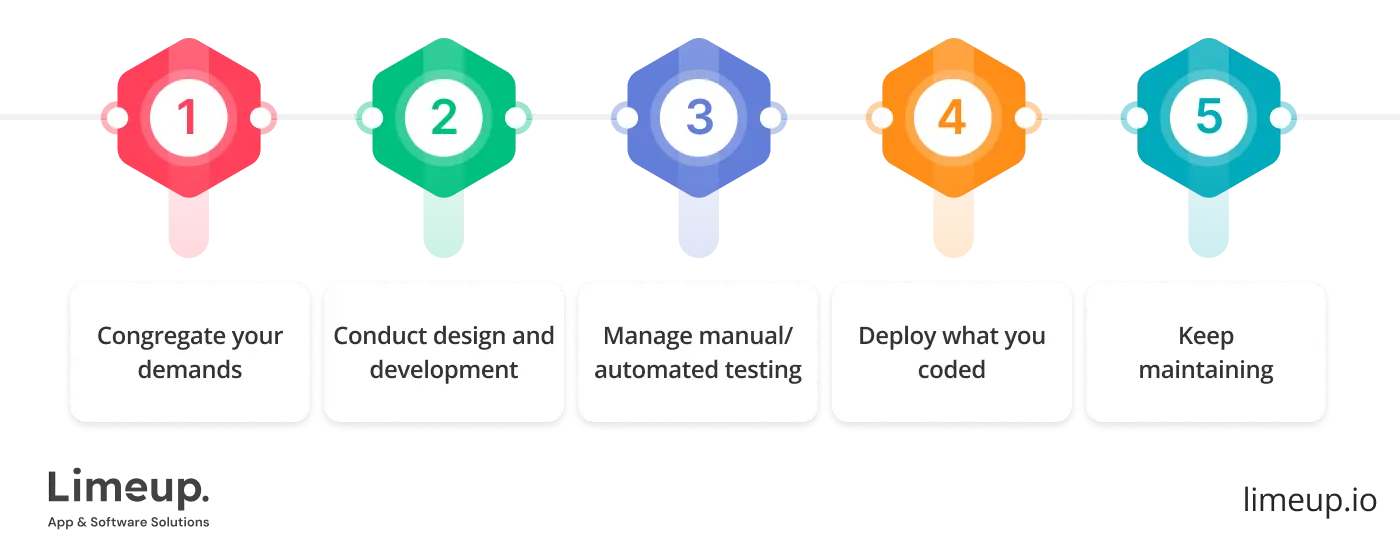
— Step 1. Congregate your demands.
We thought about calling it “Do your homework,” since it perfectly describes this stage. Yes, it may seem pretty dull since not many people are fascinated by paperwork with documentation but let’s imagine that all the world-class investors don’t dive deeper into the market and analytics. Would they be so successful? — We are not sure.
The lack of planning is one of the reasons why projects fail, according to Forbes. Still, there’s a way to keep it simple and robust if you think about pain points that will be covered by your resolution, and business + tech needs. By this, we mean the needed tech stack, features, end-users’ expectations from user experience, etc.
— Step 2. Conduct design and development.
This stage is one of the widest as we have considered in our article dedicated to fintech software development, and here we will explore more of this, starting with UI/UX design that defines how your clients will interact with the app and if they actually want to do it. You need to wireframe and prototype screens, get initial feedback if it’s possible, and fine-tune it.
Business development software can’t stand without actual coding, and as you have already determined the tech stack, here you can use your power as a tech guru or apply for help from coders. According to IBM, you are able to select amidst various models, from Waterfall to Agile and Lean.
— Step 3. Manage manual or automated testing.
You can also find a provider who can do both, as the manual part is literally done by a QA tester and will cost more, while automation of this stage can be more budget-friendly. There are a plethora of tests, for example, unit, performance, security, integrations, which depend on your needs.
Moreover, you will detect any bugs that can be scratching for your components, and simultaneously you will increase customer loyalty and satisfaction, without the need to overdo any part.
— Step 4. Deploy what you coded.
Now, you are ready to go viral with your software engineering business, in other words, it’s the part of the lifecycle where you make the app accessible for visitors, provide them with training materials and ongoing support.
Successfully approved programs are more beneficial as you save costs and time resources for now and in the future when scalability is needed.
— Step 5. Keep maintaining.
Some repairs are always required as your workload may increase, as well as the needed fixes and updates. This stage defines how well your remedy will perform around the clock, as well as managing the level of security since the number of attacks grows.
Some companies also perform automation for this phase because it never ends as your utility is running, but it’s not a vital part of this step.
For now, you are fully aware of structured operations that lead to a successful carry out, empowered by practices and nuances. Further, we will investigate the functionality part as you need to pre-define it at the very first move. Keep reading, and you will learn about essentials for your platform, and even more.
Features of custom business software development
Let’s overview the crucial part of today’s topic and prevent a challenge we like to call “boiling the ocean,” when owners try to execute all available components, while it’s not that essential for small business software development. Here, we will describe some of the common ones:
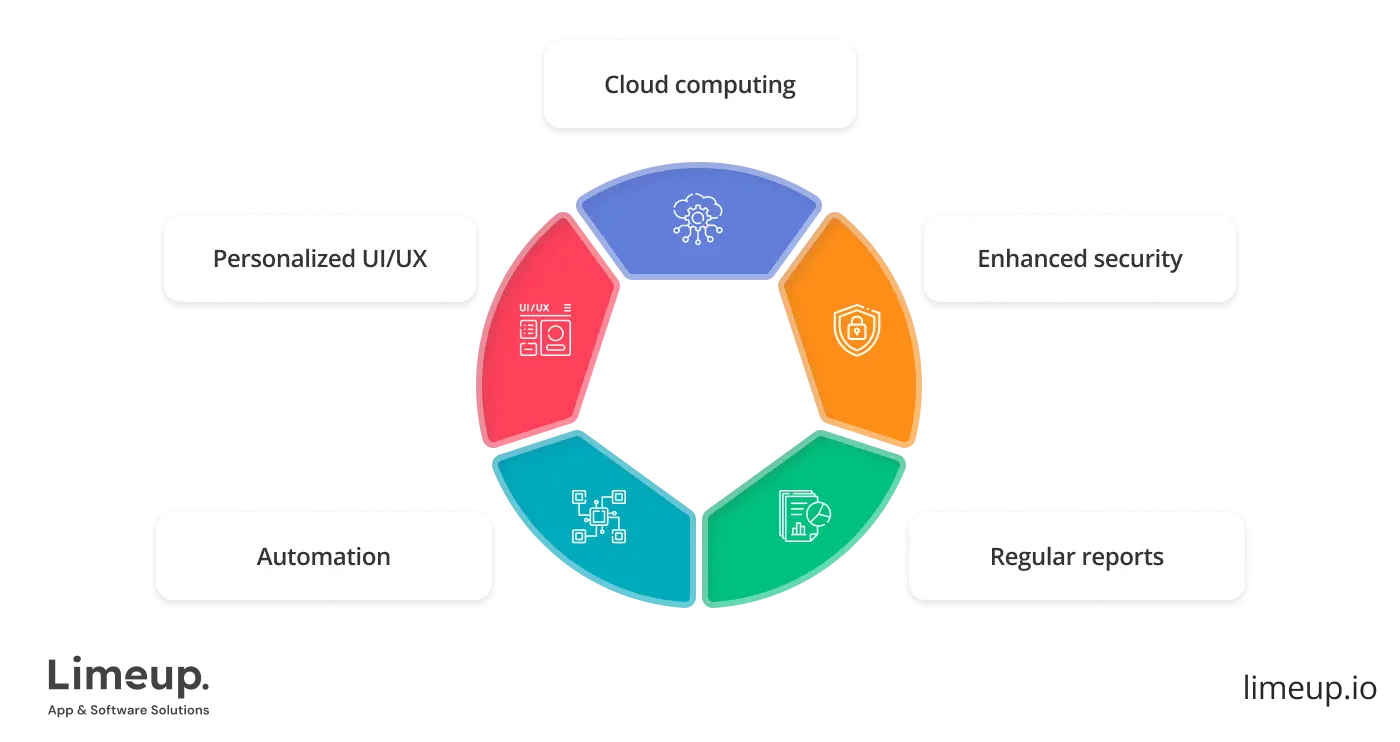
- Automation for various aspects is the first thing to talk about as you are able to streamline manual and repetitive tasks that take enormous amounts of time, centralize data storage and facilitate integrations.
-
Personalized UI/UX is also a standpoint that is a golden standard in today’s markets, requiring intuitiveness, controlled access, flexibility in usage (online and offline, mobile and tablet devices), and more. It will simultaneously increase your departments’ productivity as they won’t spend work time learning the new system.
This function is a proven benefit, described in various researchers and studies, being about personalization as well, so that you will 100% adapt to what your users require.
- Cloud computing in terms of business software programming is a tandem of various notions, allowing you and your team to work within private or public environments, access the files and system remotely, even without the Internet connection, cooperate with other employees in real time, for instance, editing or sharing some files.
- Enhanced security has to be added — it’s literally the vital part — so it’s advisable to say that you can use data encryption for sensitive information, add MFA for your employees to prevent unauthorized access, and adjust to compliances.
- Regular reports are the cornerstone for every company that wants to remain competitive, and if you are wondering why, it’s simply — insights about the current state and trends that will enhance your income. You are capable of visualizing data that is aimed at performance, decision-making process, revenue growth, etc.
Based on our experience in building business software and referring to the key steps, we recommend defining your requirements at the first stage, and then you will definitely not spend extra money and move the goalposts.
How much does software development for business cost?
Getting an exact estimate regarding the rate of starting your own project is conceivably not as easy as it can appear to the naked eye since it involves a deep analysis of the needs and requirements of the solution you are laser-focused on creating. On top of that there are also aspects that influence the price, some of which you can control and others not so much.
To put it into perspective you can control how complex you want the implementation to be because it should go without saying that more operational features, custom functionality, extensive design and other nuances cost more to produce than, for example, a simple calendar app. Since the “size” of your asset equals the spendings, you can lower or heighten your expectations in terms of tariff.
There are likewise factors which you can partially take charge of such as choosing business software developers whose services are more or less expensive but be careful with this variation as the extent of fees doesn’t always guarantee a quality outcome so the attention should be more drawn to the competency and skills.
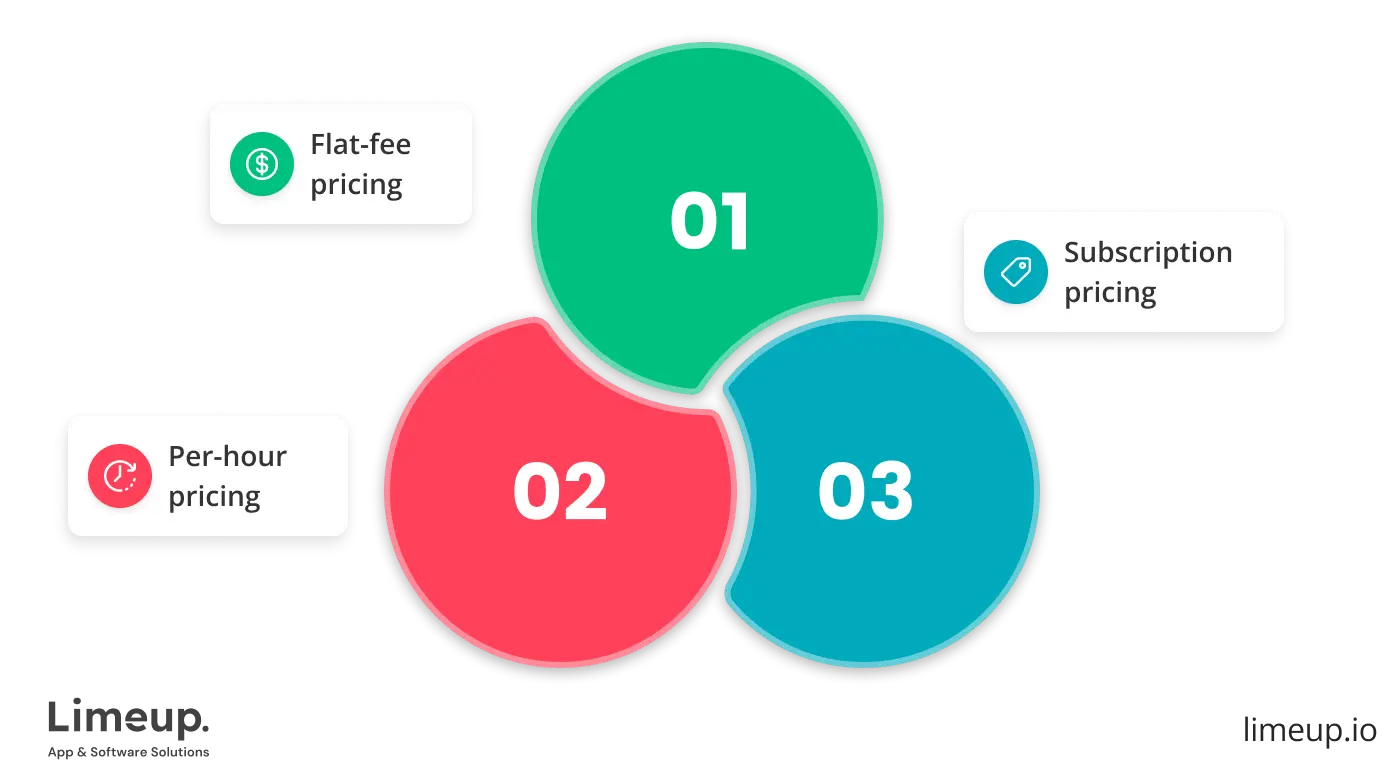
With that being said, in most cases you do have a choice in terms of the pricing models all of which can be beneficial in some instances and bring more comfort to your experience. These can be:
- Per-hour pricing in which, as the name suggests, specialists come forward with how much an hour of their work charges and you pay for the entire number of hours it took to complete the venture.
- Flat-fee pricing during which the provider calculates all of the resources they are going to require to deliver the program and extends a fixed number for the advancement from start to finish.
- Subscription pricing is not hard to wrap your mind around as it entails that the vendor has a specific package of offerings you receive and you pay a monthly fee for its fulfilment.
To make a more practical visualization of the average costs, let’s shift our attention to the comprehensive table below.
| Type | Description | Average $ |
| Rudimentary | Basic user login and authentication, simple dashboard, minimal design, notifications, etc. | $15,000–$34,999 |
| Medium complexity | Responsive interface, third-party integrations, access control, advanced search, etc. | $35,000–$70,000 |
| Advanced | Custom features and design, real-time reporting, AI/ML integration, multifactor authentication | $90,000–$200,000+ |
| Enterprise | ERP integration, BI (business intelligence), legacy modernization, role-based access control, disaster recovery. | $200,000+ |
As you can see, the discrepancies of the expenditure plan to develop business software are very substantial and rely heavily on your desires from the creation process and end goals. Hopefully, this overview gave you an estimated idea of what you can expect when you are going to be planning the expenses.
What you should be keeping in mind though is the necessity of setting realistic projections in terms of allocation to avoid simply running out of money since this branch is not cheap although it brings a variety of benefits which we will discuss next.
How to choose a business software development company?
Such a critical decision can’t be made at once since it’s recommended to evolve demands, assess tech background and depth of know-how, and more, and more. Sounds a little complicated, right? Hence, here’s a full synopsis of selecting a reliable IT supplier, so let’s skip right to the point of the matter:
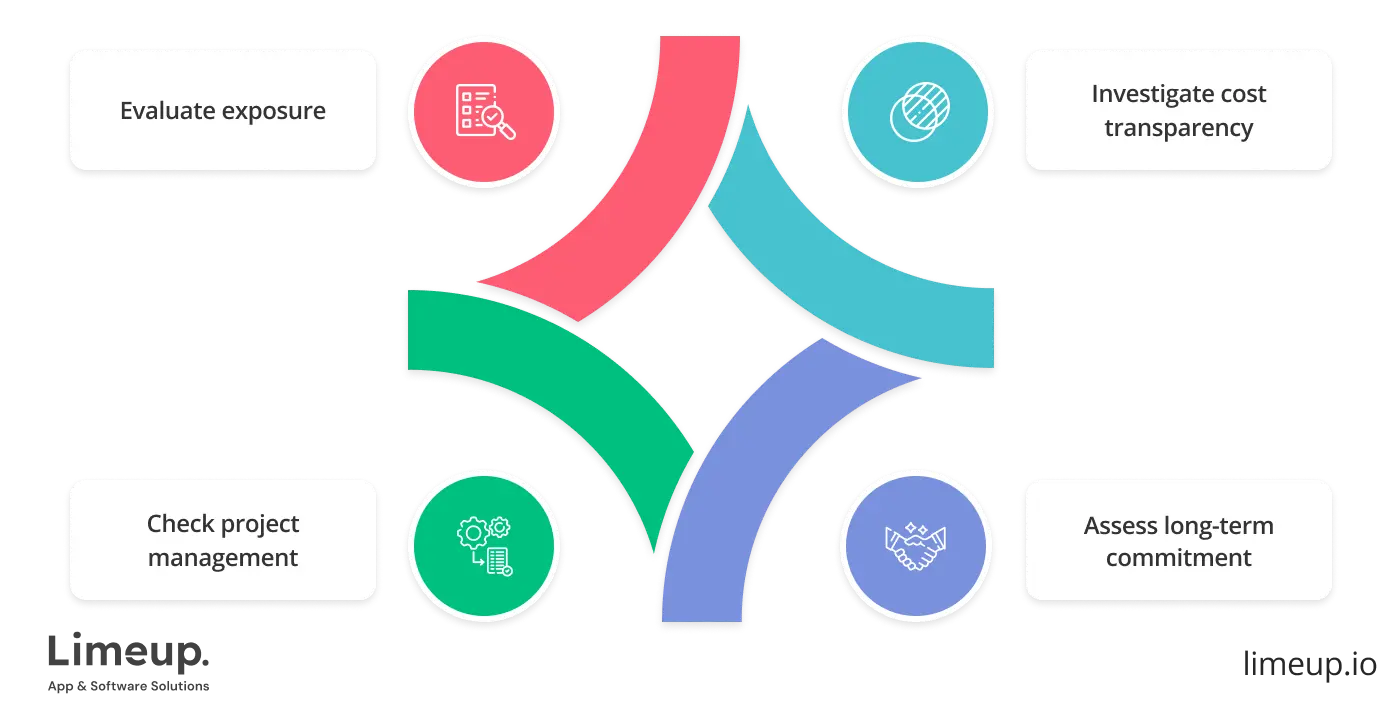
- Evaluate exposure that is related to your industry. It’s truly valuable as you are aware of any inconsistencies in your niche and tendencies, and it’s better for a vendor to know them too, to represent already-made solutions. We also include portfolios here as a certification of quality because it demonstrates their capabilities across technologies and design.
- Check project management style as a business software developer will work together with the PM who is responsible for planning, analytics, on-time delivery moments, and money management. To draw the analogy, PM is the skeleton of your cooperation, and muscles refer to coding and other processes, so ensure it’s strong enough for your demands.
- Investigate cost transparency since hidden fees can be everywhere, for example, ongoing maintenance that can be contracted and paid additionally. On the other hand, some providers can take your budget and cover overruns or delays, and then you have to transfer more money.
- Assess long-term commitment, which means they are ready for lasting communication and have experience of offering business software development services for at least one year, or, if they are newcomers, their collaboration style suits your vibe 100%.
We named the crucial ones, and others will depend on your expectations, for example, if you want to match in corporate culture, examine social and media presence, awards, conferences, or other prominent concepts.
One of the most facilitated ways to hire a proper partner is referring to pre-made lists, for example, software development companies in London where professionals pre-select agencies and provide full information about their operations, industries, cost, etc.
What are the trends in business software engineering?
The digital world is a sphere that rapidly evolves and replaces old, less useful methods and approaches with adaptable options that deliver more value to the target audience and the corporations themselves. This is why, year after year, we see new technologies and tools emerging on the scene and drawing all of the attention of engineers.
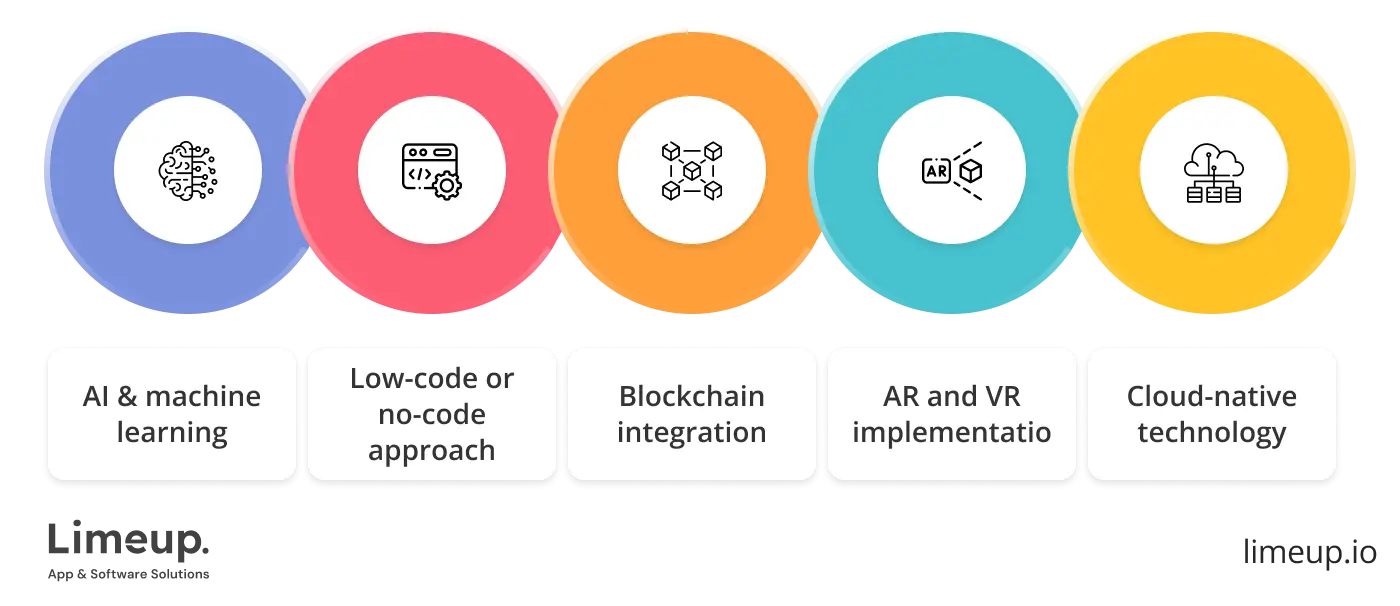
As of today, the variety of trends you can adjust if you want to develop business software is bustling so we are going to go over the five most prominent tendencies in 2026.
Artificial intelligence and machine learning.
AI and ML technologies are breaching through the stigma and rapidly changing the market of software crafting with revolutionary model that make generation less of a headache and minimize human error. In fact, research published by Statista clearly demonstrates that 68% of developers respondents are using AI tools.
Such tools can significantly speed up technical processes such as writing code or automating certain testing sprints as well as introduce new opportunities for corporations with possibilities like real-time analytics, reporting, chatbots and so much more that shape a new outlook on the process.
Low-code or no-code approach.
Such platforms in software development businesses have existed before but this year saw a substantial attraction to this kind of perspective, which spells to be the future of solution building. Engineers no longer need to spend immense amounts of hours on manually writing the code, instead utilizing pre-built and drag-and-drop templates.
The downside of this point of view to those clients who wish to receive a fully personalized mechanism tailored to their needs is that simplified approach is generally not as flexible to customization. Yet for startups and small establishments which require minimal tailoring, this trend is going to save a hefty sum out of their wallets.
Blockchain integration.
While blockchain innovations may not suit every situation where software development for business is needed, they can certainly derive benefits in a plethora of niches like financial tech, real estate and even commerce. The decentralization model in which blockchain provides transparency and security for all of the parties which makes it such an attraction to entrepreneurs.
Adding of smart contracts, digital wallets, transaction immutability, cryptographic security and so much more can severely increase brand loyalty and raise the trust level. Regardless of the connotations often associated with this sphere, its rapid influence is hard to deny on the present-day market.
AR and VR implementation.
The age of silly AR tools within cellphone cameras and the limited use of VR in video games is steadily being replaced by the accomplishment of such technologies into the activity kind. The ability to craft immersive environments with 3D visualizations of objects and other features can enhance the user experience and put it on the map among innovative competitors.
Most often, such integrations are used to accompany mobile applications, which allow for the existence of things like virtual showrooms where customers can try on items without being physically present.
Cloud-native technology.
In order to build an app that is going to be future-proof, consistent and modern you should not be neglecting the prowess of cloud-based creation which has been gaining traction on the market. In a nutshell, the software that is built within the cloud enjoys storing data remotely enabling a more scalable decision as well as decreasing formation times.
Options like containers, microservices, cloud architecture, APIs — all exist to make the final product adaptable and easy to manage while introducing updates or maintaining the product in the long run.
In conclusion
So there you have it, a full understanding of the utilities used to facilitate your operations and reach new levels in revenue growing and scaling up. We have considered every aspect, from the definition to cost-forming processes and concrete steps in building your program, so now you are armed to get the ball rolling.
If you would like to cooperate with a custom business software development company which has robust domain expertise and reach excellence in software creation, contact Limeup. We will leverage our 10+ years of experience and over 200 projects done for you to receive objects-driven results.

